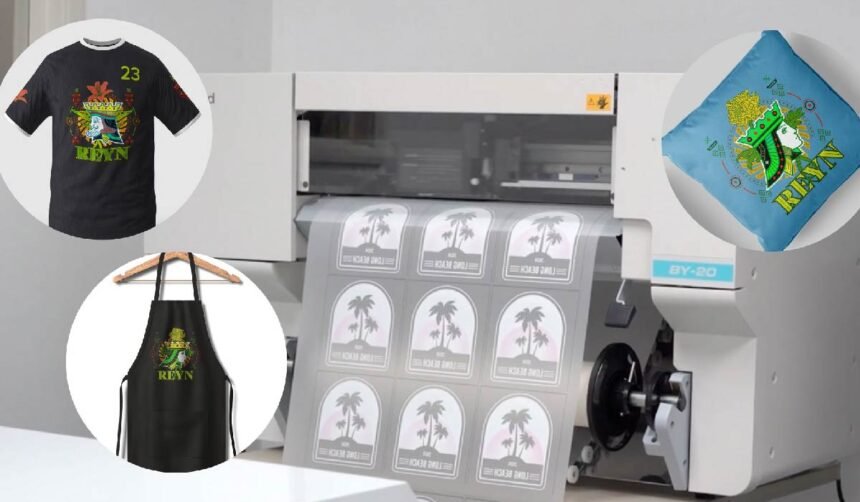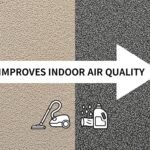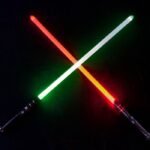In the competitive world of apparel printing, profitability depends on more than just good designs. It comes down to smart investments, efficient production, and tools that maximize returns. One of the most talked-about technologies in recent years is DTF (Direct to Film) printing. Whether you’re running a small print-on-demand store or scaling a mid-sized clothing brand, understanding the cost-effectiveness and long-term ROI of DTF printing is essential.
With solutions like the UV DTF printer now available for niche surfaces, many business owners are comparing technologies closely. But for apparel-focused businesses, traditional DTF printing remains a solid investment—offering the perfect balance of low cost, high output, and wide material compatibility.
Let’s break down the financial and practical value of DTF printing—and why it may just be the smartest move your apparel business can make.
Initial Investment: What Does It Cost to Get Started?
Setting up a DTF printing system is surprisingly affordable compared to other print technologies like DTG (Direct to Garment) or screen printing.
Here’s what a typical DTF setup includes:
- A DTF printer
- Heat press machine
- Powder shaker (optional for high-volume)
- PET transfer film
- DTF inks and adhesive powder
You can expect a basic entry-level setup to cost around $3,000 to $5,000, depending on size and features. That’s much less than high-end DTG printers that start above $10,000. With the right support and guidance—especially from trusted names like DTF LINKO—you can find a system that’s beginner-friendly but built to scale.
For many apparel startups, this relatively low barrier to entry means faster launch times and less financial risk.
Cost Per Print: Maximizing Margins:
One of the biggest financial advantages of DTF printing lies in the low cost per unit. On average, the materials for printing one high-quality graphic on a t-shirt include:
- Ink cost: $0.10–$0.20
- Film sheet: $0.15–$0.30
- Adhesive powder: $0.05
- Energy usage: negligible per print
- Labor (if in-house): varies
Total cost per shirt: $0.40–$0.60 (excluding the blank garment)
Let’s say your blank cotton t-shirt costs you $2.50 and your print costs $0.60. That’s $3.10 in production cost. If you sell your shirt for $15 to $25, you’re making a gross profit of 400%–700% per piece. That’s a very healthy margin—especially for small businesses focused on custom or boutique clothing.
And unlike screen printing (which becomes costly for small batches), DTF is ideal for one-off prints or low-volume orders, making it a perfect solution for personalized or seasonal items.
Time Efficiency: Print More in Less Time:
Time is another part of ROI that’s often overlooked. A technology that saves time ultimately increases revenue by allowing you to take on more orders.
With DTF printing:
- You don’t need to pretreat fabric (unlike DTG)
- You don’t need to create screens (unlike screen printing)
- You can prepare prints in batches and apply them later
- Transfer time is under 20 seconds with a heat press
This makes DTF ideal for print-on-demand models, pop-up brands, or businesses doing both online and offline sales. Instead of printing on a shirt right away, you can stock printed transfers and apply them only when needed, reducing waste and improving turnaround times.
Quality and Durability: Fewer Returns, Happier Customers:
Returns and refunds can quietly kill profit margins—especially in apparel. If prints fade, crack, or peel after a few washes, you’ll lose money and customer trust.
DTF printing creates high-resolution, full-color prints that are both stretchable and washable. The adhesive powder used in DTF bonds deeply into the fabric, ensuring long-term durability even on complex prints.
This means fewer returns, better reviews, and more repeat customers—all of which increase your long-term ROI beyond just cost-per-print.
Flexibility = More Product Options:
Another big financial plus is the flexibility DTF offers. You’re not limited to 100% cotton like DTG. DTF prints on:
- Cotton
- Polyester
- Cotton blends
- Nylon
- Canvas
This lets your business launch multiple product lines—sportswear, uniforms, baby clothing, tote bags—without changing your printing system. You can adapt quickly to customer demand, launch seasonal items, or collaborate with local brands, all using the same equipment.
The more product types you can offer, the more revenue streams you can open.
Scaling Up: When and How the ROI Grows;
Your DTF setup can start small—but it can scale with you. As your business grows, you can upgrade from a desktop DTF printer to a larger, industrial model with automation like built-in powder shakers and dryers.
Scaling up doesn’t mean changing your entire process. That’s the beauty of DTF—it grows with you without requiring major changes in workflow or retraining staff. You can move from making 10 shirts a day to 500 per week without losing print quality or increasing labor costs significantly.
This kind of scalable ROI is hard to find in other printing methods, where bigger output often demands big new investments.
UV DTF: A Side Note for Specialized Use:
While we’re focused on apparel here, it’s worth mentioning the role of UV DTF printers. Though not ideal for clothing, UV DTF is perfect for hard-surface items like mugs, wood, metal, or plastic. If your business ever plans to branch into branded gifts or packaging, UV DTF could complement your apparel printing setup beautifully.
Pairing both technologies allows your business to offer a complete branding solution—shirts, accessories, packaging, and more—without relying on external suppliers.
Final Verdict: Is DTF Worth the Investment?
Absolutely. For apparel businesses, especially small and growing ones, DTF offers an excellent return on investment. The setup cost is manageable, the print quality is outstanding, and the running costs are low. You can offer fast, custom printing with excellent durability, and you’re not limited to any one type of product.
Add in the ability to scale as your orders increase, and you’ve got a printing method that’s built not just for today’s needs—but for long-term success. And with reliable partners like DTF LIN KO providing proven machines and support, you can feel confident your investment will continue to pay off.
So whether you’re launching a niche t-shirt line or scaling your fashion brand, DTF printing is not just a printing solution—it’s a business growth engine.









